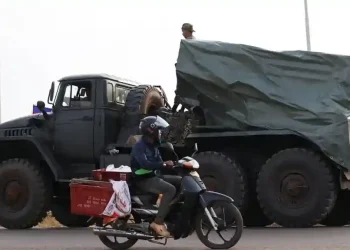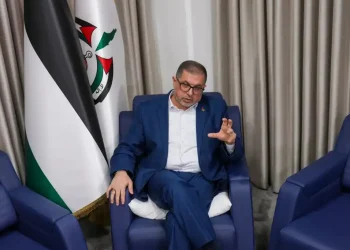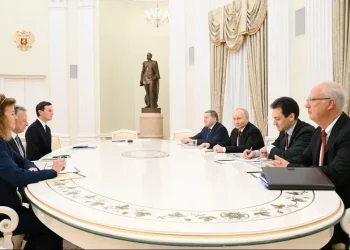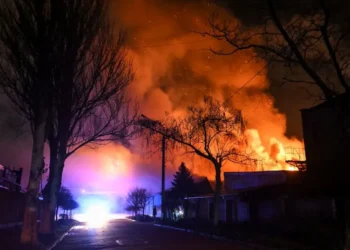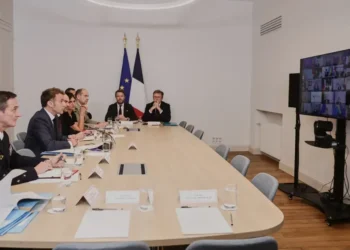Israel’s ‘Operation Rising Lion’ Wipes Out Top Iranian Military and Nuclear Leaders
In a stunning escalation of regional conflict, Israel has killed four of Iran’s most powerful security officials in a targeted military campaign dubbed Operation Rising Lion. Among the dead are Major General Hossein Salami, head of the Islamic Revolutionary Guard Corps (IRGC); Major General Mohammad Bagheri, Iran’s top military officer; Ali Shamkhani, former national security chief and key nuclear negotiator; and Amir Ali Hajizadeh, the architect of Iran’s missile program.
This marks one of the most consequential blows to Iran’s leadership in recent memory, likely crippling its military coordination and clouding the future of its regional and nuclear ambitions.
Why It Matters
These men weren’t just symbolic figures—they were the strategic and operational core of Iran’s security and foreign policy apparatus. Their deaths are expected to rattle Iran’s military establishment, weaken its capacity to respond to Israeli or Western strikes, and send ripple effects through its network of proxy forces across the Middle East.
Who Was Killed and Why They Mattered
1. Major General Hossein Salami – Head of the IRGC
Salami, 63, was one of the most powerful men in Iran. As commander of the Islamic Revolutionary Guard Corps (IRGC) since 2019, he oversaw a sprawling military, intelligence, and ideological empire reporting directly to Supreme Leader Ayatollah Ali Khamenei.
Under his leadership, the IRGC:
- Crushed domestic dissent during waves of protest.
- Supported militant proxy groups across Iraq, Syria, Lebanon, and Yemen.
- Supplied the Houthis with missiles and drones used to strike shipping and Israel.
- Oversaw Iran’s first-ever direct missile and drone attacks on Israeli territory in April and October 2024.
Salami was also linked to the downing of a Ukrainian passenger plane in 2020, which killed 176 civilians. His presence symbolized Iran’s defiance—once seen saluting troops in a missile facility while trampling American and Israeli flags.
His death is being compared to the equivalent of the U.S. losing its Chairman of the Joint Chiefs of Staff, according to CNN analyst Beth Sanner.
2. Major General Mohammad Bagheri – Chief of Staff of Iran’s Armed Forces
Bagheri, Iran’s top-ranking military officer since 2016, oversaw more than 500,000 active military personnel. He played a pivotal role in military planning, strategy, and coordination across Iran’s conventional and unconventional forces.
The U.S. sanctioned Bagheri in 2019 for his alleged role in promoting terrorism and destabilizing activities in the region. He was frequently seen visiting Iranian troops in Syria and held meetings with high-level officials—including a rare 2024 sit-down with Saudi Defense Minister Prince Khalid bin Salman.
During that meeting, Bagheri was warned to take then-President Trump’s nuclear deal offer seriously—or risk war with Israel. His killing is a severe blow to Iran’s overall defense infrastructure.
3. Ali Shamkhani – Former National Security Chief and Key Diplomat
A long-time aide to Khamenei and a veteran of both the IRGC and Iran’s Ministry of Defense, Shamkhani was a familiar name in global diplomatic circles. He served as Secretary of Iran’s Supreme National Security Council from 2013 to 2023 and was central in:
- Re-establishing diplomatic ties with Saudi Arabia in a landmark China-brokered deal.
- Representing Iran in nuclear negotiations with Western powers.
- Shaping Iran’s posture toward both the U.S. and its neighbors.
Despite being abruptly replaced last year—possibly due to his political ambitions—Shamkhani remained a key advisor to the Supreme Leader. His ability to bridge hardline and pragmatic camps in Iranian politics made him a unique and influential figure.
4. Amir Ali Hajizadeh – Commander of IRGC Aerospace Force
Perhaps the most technically dangerous of the four, Hajizadeh was the head of Iran’s missile program and orchestrated both Iran’s April 2024 attack on Israel and the 2020 missile strike on U.S. forces in Iraq.
As commander of the IRGC’s Aerospace Force, Hajizadeh was behind the development of advanced missile systems and unmanned aerial vehicles (UAVs). His death in an Israeli strike—alongside several senior air force leaders—at an underground command center is a significant blow to Iran’s offensive capabilities.
The Bigger Picture
This isn’t just a hit on individuals—it’s a strategic decapitation of Iran’s military command, with implications for everything from the nuclear file to the proxy wars stretching from Yemen to Lebanon.
Analysts expect Iran to respond, though it may take time for a coordinated counterattack to emerge. In the meantime, the deaths are expected to complicate Iran’s chain of command, undermine deterrence, and raise tensions across the region, especially with Hezbollah and the Houthis—two of Iran’s key partners—already engaged in escalating conflicts.
What Comes Next?
While Tehran has yet to formally respond, the shock of losing so many top commanders in a single operation will be felt for months, if not years. Israel’s bold action signals it is willing to strike at the highest levels of Iranian power, even at the risk of open escalation.
The world now waits to see whether Iran will retaliate—and if so, where and how hard.
This article was rewritten by JournosNews.com based on verified reporting from trusted sources. The content has been independently reviewed, fact-checked, and edited for accuracy, neutrality, tone, and global readability in accordance with Google News and AdSense standards.
All opinions, quotes, or statements from contributors, experts, or sourced organizations do not necessarily reflect the views of JournosNews.com. JournosNews.com maintains full editorial independence from any external funders, sponsors, or organizations.
Stay informed with JournosNews.com — your trusted source for verified global reporting and in-depth analysis. Follow us on Google News, BlueSky, and X for real-time updates.


